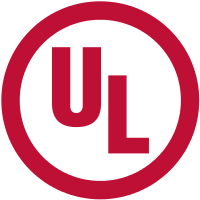HARMONIZING STANDARDS
We are living in a rapidly changing world. With continued globalization and the explosion of electronic media, we are becoming more connected every day to people around the globe. Many manufacturers source components in one country, build products in another, and then distribute their products in many others. These products must meet the requirements of multiple countries, and, specifically, multiple safety standards. THE BENEFITS OF HARMONIZATION Complying with multiple standards can be costly, slow down product launch, result in redundant testing and, if requirements are mutually exclusive or conflicting, may require manufacturing different product models. Conversely, requirements or guidelines comprising different standards that apply to the same industries, devices or initiatives (such as efficient energy use) often overlap. The goal of harmonization is to find these commonalities, identify critical national requirements that need to be retained, and provide a common standard. For businesses, harmonization cuts compliance costs and simplifies the process of meeting requirements. It also reduces complexity for those tasked with testing and auditing standards compliance UL supports harmonization to minimize redundant or conflicting standards where support for such harmonization exists. There are two key types of harmonization that take place at UL: international harmonization and regional harmonization. INTERNATIONAL HARMONIZATION Typically, international harmonization involves the adoption of an international standard, such as one published by the IEC (International Electrotechnical Commission) or ISO (International Organization for Standardization). International harmonization can also imply the promotion of UL Standards concepts into existing or new IEC and ISO standards. When support for harmonization of a standard is achieved, then an IEC/ISO-based UL Standard, with appropriate national differences, is developed. UL emphasizes keeping the national differences incorporated in an IEC-based UL Standard to a minimum. The video below features an IEC interview with Keith Williams, UL President and CEO, for IEC's Global Visions video mini-documentaries. REGIONAL HARMONIZATION Regional harmonization involves the collaboration and co-publication of common standards by UL and one or more other national standards development organizations. UL has co-publication agreements with several Standards Development Organizations (SDOs) in order to develop common standards. UL has developed procedures and tools to assist with the development of harmonized drafts. UL AND HARMONIZATION UL prefers to work in partnership with industry to harmonize standards. International harmonization remains an important aspect of UL Standards development. When harmonization has proved to be a viable option, UL will continue to support international harmonization, and UL will continue to identify ways to minimize national differences in the currently published IEC-based UL Standards. Additionally, UL will continue to encourage the participation by interested parties around the globe in the UL Standards development and harmonization process. By including diverse views on UL's Standards Technical Panel, the outcome will be a more globally accepted set of requirements that make a safer, more sustainable world for all.Visit the UL International (UK) Ltd website for more information on HARMONIZING STANDARDS





